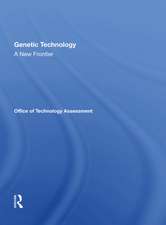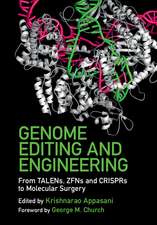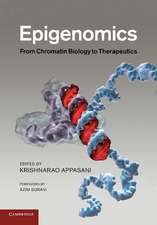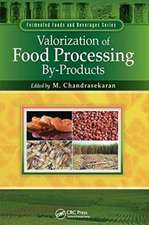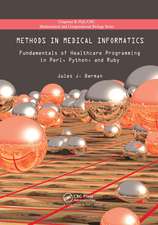Optogenetics: From Neuronal Function to Mapping and Disease Biology
Editat de Krishnarao Appasanien Limba Engleză Hardback – 26 apr 2017
Preț: 1137.11 lei
Preț vechi: 1322.21 lei
-14% Nou
Puncte Express: 1706
Preț estimativ în valută:
217.62€ • 226.35$ • 179.65£
217.62€ • 226.35$ • 179.65£
Carte tipărită la comandă
Livrare economică 14-28 aprilie
Preluare comenzi: 021 569.72.76
Specificații
ISBN-13: 9781107053014
ISBN-10: 1107053013
Pagini: 502
Ilustrații: 65 b/w illus. 37 colour illus. 6 tables
Dimensiuni: 179 x 253 x 29 mm
Greutate: 1.18 kg
Editura: Cambridge University Press
Colecția Cambridge University Press
Locul publicării:New York, United States
ISBN-10: 1107053013
Pagini: 502
Ilustrații: 65 b/w illus. 37 colour illus. 6 tables
Dimensiuni: 179 x 253 x 29 mm
Greutate: 1.18 kg
Editura: Cambridge University Press
Colecția Cambridge University Press
Locul publicării:New York, United States
Cuprins
List of contributors; Foreword; Preface; List of abbreviations; Part I. Optogenetics in Model Organisms: 1. Introduction to optogenetics: from neuronal function to mapping and disease biology; 2. Uncovering key neurons for manipulation in mammals; 3. From connectome to function: using optogenetics to shed light on the Caenorhabditis elegans nervous system; 4. From synapse to behaviour: optogenetic tools for investigation of the Caenorhabditis elegans nervous system; 5. Using optogenetics in vivo to stimulate regeneration in Xenopus laevis; Part II. Opsin Biology, Tools and Technology Platform: 6. Sodium and engineered potassium light-driven pumps; 7. Simultaneous electrophysiology and optogenetic stimulation methods; 8. Role of electrical activity in horizontal axon growth in the developing cortex: a time-lapse study using optogenetic stimulation; 9. Development of an optogenetic tool to regulate protein stability in vivo; 10. Photo-activatable nucleotide cyclases for synthetic photobiology applications; 11. Bioluminescence activation of light-sensing molecules; Part III. Optogenetics in Neurobiology, Brain Circuits and Plasticity: 12. Optogenetics for neurological disorders: what is a path to the clinic?; 13. Optogenetic control of astroglia; 14. Optogenetics for neurohormones and neuropeptides: focus on oxytocin; 15. Optogenetic approaches to investigate brain circuits; 16. Optogenetic mapping of neuronal connections and their plasticity; Part IV. Optogenetics in Learning, Neuro-psychiatric Diseases and Behavior: 17. Optogenetics to study reward learning and addiction; 18. Optogenetics and the dissection of neural circuits underlying depression and substance-use disorders; 19. Optogenetics research in behavioral neuroscience: insights into the brain basis of reward learning and goal-directed behavior; 20. An optogenetic approach to treat epilepsy; 21. Using optogenetics and stem cells-derived neural engraftment techniques to restore lost motor function; Part V. Optogenetics in Vision Restoration and Memory: 22. Optogenetics in treating retinal disease; 23. Optogenetics for vision recovery: from traditional to designer optogenetic tools; 24. A promise of vision restoration; 25. Holographic Optical Neural Interfacing (HONI) with retinal neurons; 26. Strategies for restoring vision by transducing a channelrhodopsin gene into retinal ganglion cells; 27. Optogenetic dissection of a top-down prefrontal-to-hippocampus memory circuit; Part VI. Optogenetics in Sleep, Prosthetics and Epigenetics of Neurodegenerative Diseases: 28. Optogenetic dissection of sleep-wake control: evidence for a thalamic control of sleep architecture; 29. Optogenetics and auditory implants; 30. Optogenetic stimulation for cochlear prosthetics; 31. The role of amino acids in neurodegenerative and addictive diseases; 32. Applications of combinations of deep brain stimulation and optogenetics: ethical considerations: an epilogue.
Recenzii
'Optogenetics has transformed neuroscience and has become a key element of the toolkit used by thousands of labs worldwide. If anyone needs convincing that the field of optogenetics has come of age, this book provides compelling evidence. Written by leading experts in the field and covering the gamut of optogenetics research from tool development and use in basic research through to translational applications, Optogenetics exemplifies how this technique now illuminates all areas of neuroscience research.' Michael Hausser, University College London,
''Let there be light'. Or more precisely, deliver the needed wavelength at appropriate power, with high temporal and spatial resolution if you want to figure out how brain circuits work. This volume has many excellent chapters and the right toolbox for the job.' György Buzsáki, Neuroscience Institute and Langone Medical Center, New York University
'Optogenetics is a unique compilation of articles by some of the key experts in the field covering the entire breadth of topics from molecular mechanisms, via hands-on application tips all the way to clinical use and ethical implications as well as a detailed and accurate historical perspective. For this still rapidly developing field it will become a must-read and core reference for novices and experts alike.' Andreas Schaefer, he Francis Crick Institute, London
'Both the expert and novice, alike, will find this to be a valuable resource that covers multiple aspects of the Optogenetics field, from its history through to current scientific and potential clinical applications.' Michelle M. Sidor, Novartis Institutes for Biomedical Research, Massachusetts
''Let there be light'. Or more precisely, deliver the needed wavelength at appropriate power, with high temporal and spatial resolution if you want to figure out how brain circuits work. This volume has many excellent chapters and the right toolbox for the job.' György Buzsáki, Neuroscience Institute and Langone Medical Center, New York University
'Optogenetics is a unique compilation of articles by some of the key experts in the field covering the entire breadth of topics from molecular mechanisms, via hands-on application tips all the way to clinical use and ethical implications as well as a detailed and accurate historical perspective. For this still rapidly developing field it will become a must-read and core reference for novices and experts alike.' Andreas Schaefer, he Francis Crick Institute, London
'Both the expert and novice, alike, will find this to be a valuable resource that covers multiple aspects of the Optogenetics field, from its history through to current scientific and potential clinical applications.' Michelle M. Sidor, Novartis Institutes for Biomedical Research, Massachusetts
Descriere
This book provides applications for the revolutionary technique of optogenetics, which combines genetic and optical methods to observe the function of neurons.


